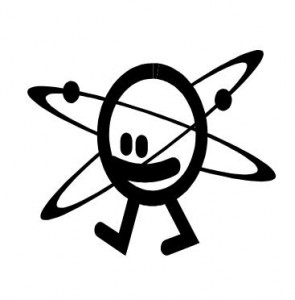Quantum theory is an enigma. Richard Feynman a Nobel Prize winning physicist said, “If you think you understand quantum mechanics, you don’t understand quantum mechanics.” Which is another way of saying that quantum theory is not humanly understandable.
Niels Bohr, another Nobel Prize winning physicists, and an architect of quantum theory said, “If anybody is not shocked by quantum theory, he has not understood it.”
Quantum theory is a description of reality at the atomic level. However at this point all we have is mathematics that describes quantum mechanics. We have no corresponding physical description of what it means. It seems that there is a break down in our ability to describe what the mathematics in the theory is telling us.
So why is this? One reason is due to the fact that physicists have to by necessity use language and the mathematics that has an underlying basis on a space-time framework. When this hits against a reality that is not mechanical and is beyond space-time, the mathematics starts giving paradoxical answers.
Niels Bohr understood this and said, “We must be clear that when it comes to atoms, language can be used only as in poetry. The poet, too, is not nearly so concerned with describing facts as with creating images and establishing mental connections.”
Clearly Bohr understood that our view of “reality” as describing something that “exists” implies an objectified picture of the world in space and time. He clearly understood the pitfall of language and words as there is within them a preexisting space-time framework and bias. This is why he said: “The word “reality” is also a word, a word which we must learn to use correctly.”
The paradoxical nature of quantum theory has given rise to varying interpretation to what it all means. In spite of the caution pronounced by Bohr, many scientists and others have valiantly tried to interpret quantum theory. This has lead to mixed results and much confusion. We can only increase the confusion by trying to speak more about what quantum theory means. We already have a mess at our hands, best described as a “quantum mess”, as all and sundry try to take advantage of the confusion to pronounce interpretations that suit their own agenda.
We must hence be cautious about this. The attempt to over interpret quantum theory to show that it conforms to some eastern or mystical ideas may also be misguided as there is great room for misunderstanding and mistakes. The situation is equivalent to hearing somebody speak in a language that we do not understand, and then hearing somebody else speak in another language that we do not understand, and pronouncing that though we have no idea what each is saying, that both are speaking the same gibberish as it sounds similar!
But does this mean that there is nothing at all we can talk about reality? Is there no way out of the “quantum mess”? Well, we must proceed with caution. It may be safer to speak in terms of what reality is not rather than what it is. At this point this is what we can say what quantum science says for sure:
- Reality is not local. This means that the concept of separation in space-time does not hold. This means that what we may think as separate and distinct objects may at some deeper level be connected.
- What this seems to imply is that there seems to be vital aspects of reality that are best described as being beyond space-time.
If there is any other branch of thought in east or west, religion or philosophy, which speaks to the same ideas then we can say that we have some convergence. But going beyond this, we must tread with extreme care.
What does this mean from the point of view of yoga? All we can way from the point of view of yoga is that we do see some reinforcement of the idea of quieting the mind. The fact that quantum mechanics seems to imply the limitation of thoughts and ideas in understanding reality, provides some credence to the idea of quieting the mind to allow it to directly experience reality “as it is” without the lens of words and thoughts.
In the end, quantum theory should give those who are enamored by the power of science and logic to provide all the answers some pause. Finally, Einstien gets the last word:
“A knowledge of the existence of something we cannot penetrate, our perceptions of the profoundest reason and the most radiant beauty, which only in their most primitive forms are accessible to our minds: it is this knowledge and this emotion that constitute true religiosity. In this sense, and only this sense, I am a deeply religious man.”


Pingback: Darren Main – Resources for the Urban Mystic » Blog Archive » Quantum Mess